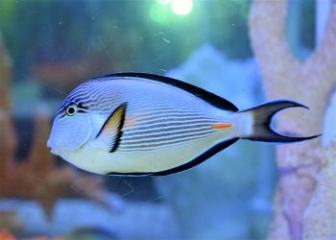Koi Fish - Characteristics, Meaning & How to Raise According to Feng Shui
Blog | by
Learn more about Koi fish: Origin, classification, feng shui meaning, price list and detailed Koi fish farming techniques for beginners, find out here
Koi fish is not only a beautiful, famous and valuable ornamental fish from Japan, but it also has many profound meanings about feng shui, luck and prosperity. Currently, Koi fish has become a symbol of class for ornamental fish players in Vietnam.
In this article, let's Nice Fish explore all the information about Koi fish from origin, classification, care to price.
Information about Koi fish :
| Scientific name | Cyprinus carpio haematopterus |
| Common name | Nishikigoi Carp |
| Gender | Animalia - Animals |
| Branch | Chordata - Chordata |
| Class | Actinopterygii - Ray-finned fishes |
| Set | Cypriniformes - Carp |
| Lifespan | 40 - 60 years old |
| Source | Japan |
Where do Koi fish come from?
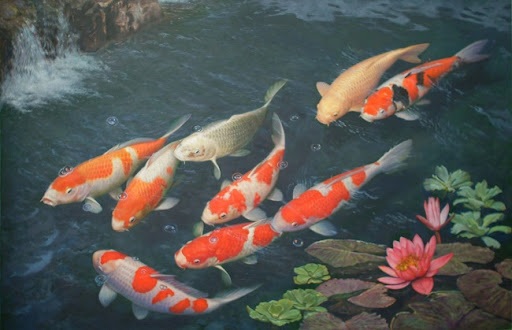
Koi fish are beautiful Japanese ornamental fish.
Koi fish or specifically called Nishikigoi carp, scientific name is Cyprinus carpio haematopterus, a breed of fish belonging to the carp family, originating from Japan.
The formation and development process of this fish breed is as follows:
- In 1914, Japan held its first Koi exhibition in Tokyo and Niigata Island, thanks to which the Japanese carp with two colors of white and red became widely known.
- After the breeding process, breeders select fish with characteristic colors such as red, yellow, white, black, thanks to which the characteristics of shape, pattern, and color of Koi fish are increasingly perfected.
- Niigata and Toei are two localities in Japan famous for having many Koi breeding and breeding centers with the strictest standards.
- Thanks to its beautiful colors, the feng shui meaning of Koi fish quickly became known worldwide and was loved by many aquarium hobbyists.
Meaning of Koi fish

Koi fish have feng shui significance.
Koi fish is not just a common ornamental fish but it has spiritual, feng shui and special cultural significance in Japan, China and the West, let's find out now.
Symbol of perseverance
Koi fish is associated with the legend "Carp jumps over the Dragon Gate to become a dragon" symbolizing the will to rise up and overcome all human difficulties and challenges.
Attract wealth and prosperity
In feng shui, Koi fish belong to the water element, symbolizing money and energy flow, so many people choose to raise Koi to attract wealth and prosperity. Specifically as follows:
- Raising 9 Koi fish, including 8 red and 1 black, is considered to bring luck and fortune.
- Koi fish pond placed in the right direction for the homeowner will activate the wealth sector.
Show elegance and class
Koi fish is a species of fish that is bred and selected very carefully in Japan, so it has a very high aesthetic value. Raising Koi is not only a simple expression of passion, but it is also a delicate art, a symbol of the owner's class.
Classify Koi fish by color and pattern
Currently, there are many ways to classify Koi fish, here we will learn how to classify by shape .
Kohaku Koi Fish
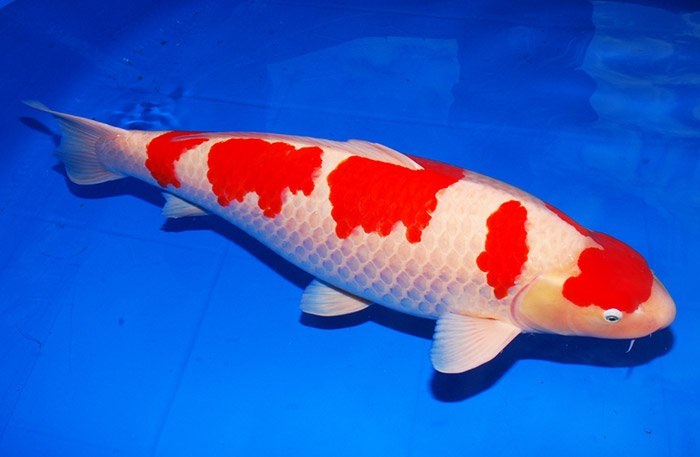
Kohaku Koi fish with two colors red and white.
This is the most classic and beloved Koi line because of its purity, one of the three main Koi lines "Gosanke" including Kohaku, Sanke and Showa. The fish's body is pure white combined with bright red patches, absolutely no black.
In the aquarium world, there is a famous saying "Koi farming starts with Kohaku and ends with Kohaku".
Sanke Koi Fish
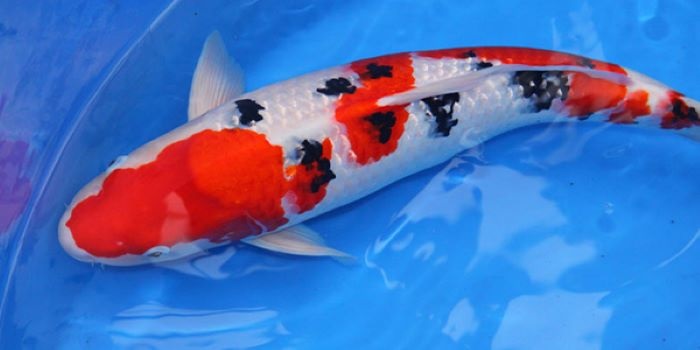
Taisho Sanke Fish.
Sanke Koi fish, also known as Taisho Sanke, belong to the main Koi group Gosanke. They have a snow-white body, with large, clear patches of bright red, and black dots scattered on the body (not on the head).
Koi Showa
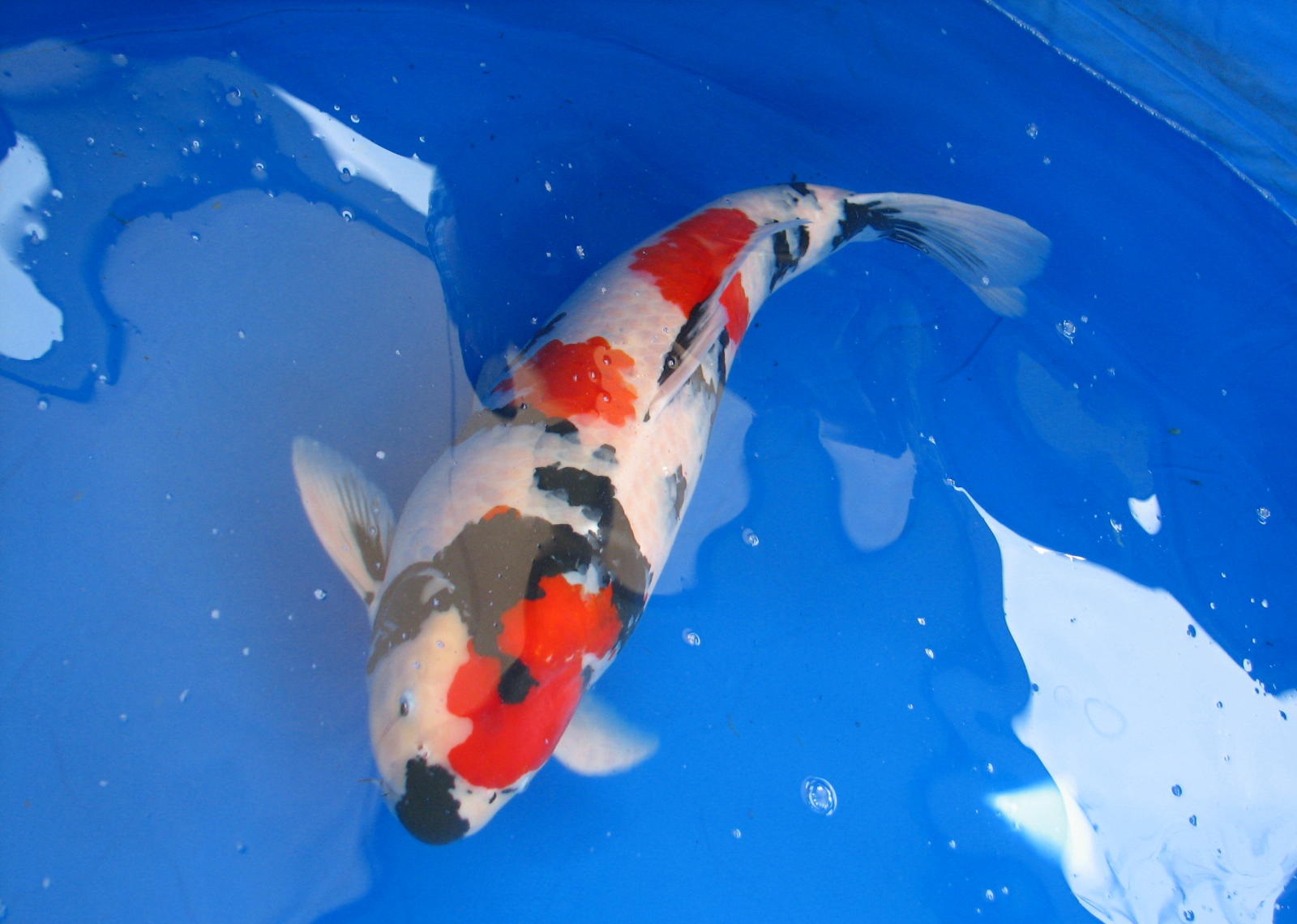
Showa Sanchoku fish with red - black - white pattern.
The full name of Koi showa is Showa Sanchoku, one of the three national Koi lines of Japan, belonging to the Gosanke group along with Kohaku and Sanke. They have a similar appearance to Sanke, but have one characteristic: the black body (Sumi) is the main background, on the Sumi background there are alternating red and white patches (Shiroji).
Koi Utsurimono
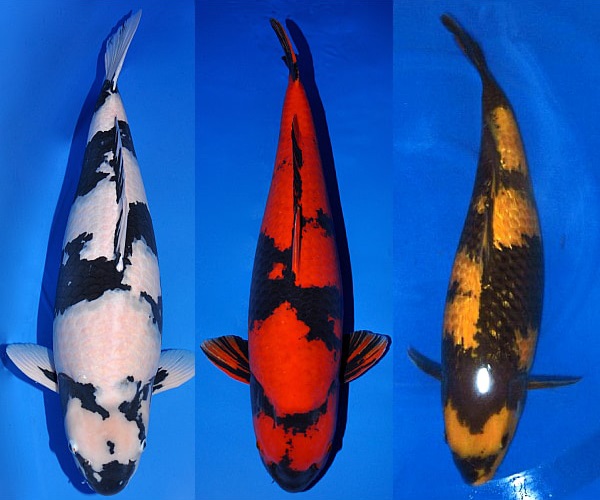
Utsurimono Koi fish with red, white, yellow patterns on a black background.
Utsurimono Koi fish, also known as Utsuri, is an impressive Koi line with red, white, and yellow patterns on a shiny black body such as red - black (Hi Utsuri), white - black (Shiro Utsuri), yellow - black (Ki Utsuri).
Koi Ogon
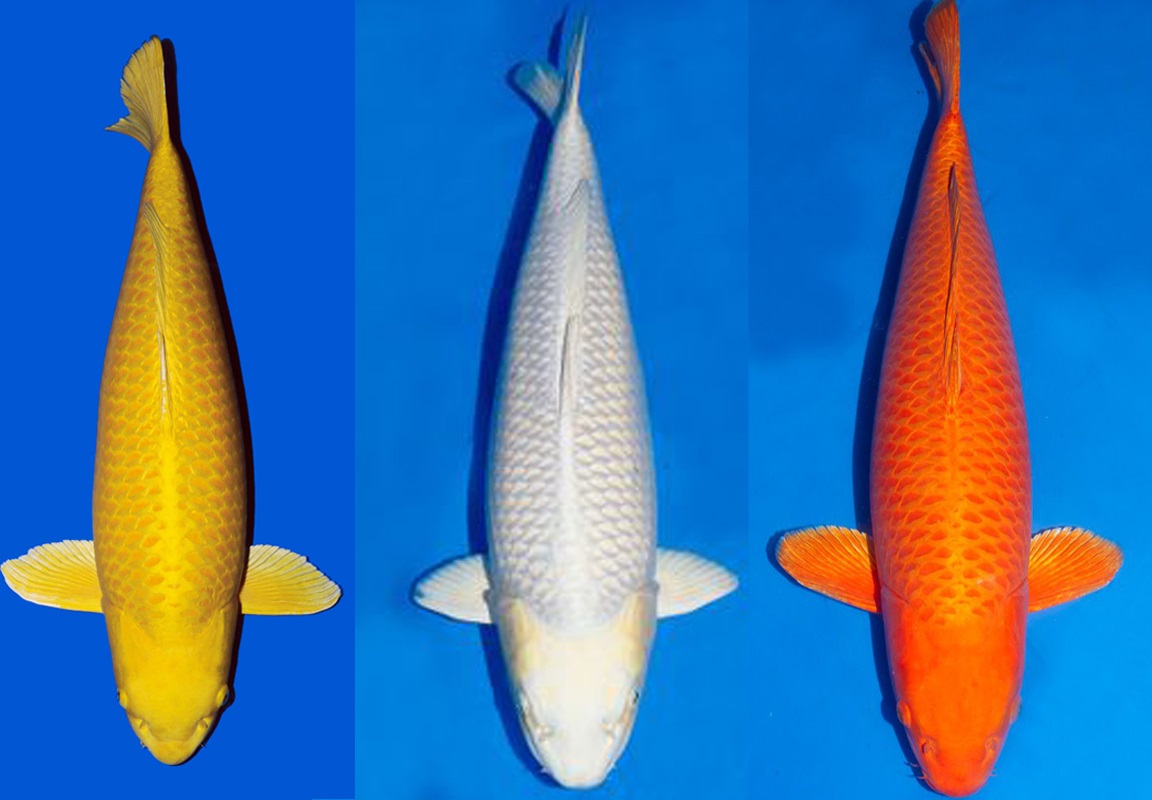
Monochromatic Ogon Koi Fish.
This is the most prominent monochromatic Koi fish, also known as "metallic in water" because its entire body has a layer of metallic scales that sparkle under the lake, no patterns, and a plump, sturdy body. Some popular Ogon Koi colors are Yamabuki Ogon - Metallic Gold, Platinum Ogon - Metallic Silver White, Orrenji Ogon - Metallic Orange....
Koi Asagi

Asagi Koi fish with super unique colors.
This is a classic Koi line with a strong artistic character, with a gray-blue back, mesh-like scales, combined with orange-red on both sides of the belly, looking very balanced. In particular, this line of fish does not have Sumi (black), so the color looks extremely harmonious and gentle. This fish species appeared in the Edo period of Japan, and is one of the most traditional fish lines.
Koi Shusui

Shusui Koi - Scaleless Koi.
As a scaleless variant of the Asagi Koi line, they are characterized by a smooth back, no scales or only 1 - 2 rows of large scales running along the back, the back is bright blue, with black scales, the head and lower body are white, the belly is red (orange) like Asagi.
Koi Bekko
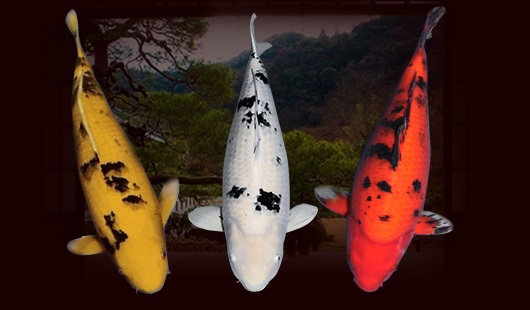
Bekko Koi fish with yellow, white, orange red colors.
This is a minimalist but extremely special Koi line with a monochrome body background, usually white, red or yellow, highlighted with black spots (Sumi) scattered throughout the body, but no sumi on the head. Popular types of Koi Bekko are: Shiro Bekko - Snow White, Aka Bekko - Orange Red, Ki - Bekko - Bright Yellow,...
Criteria for evaluating standard Koi
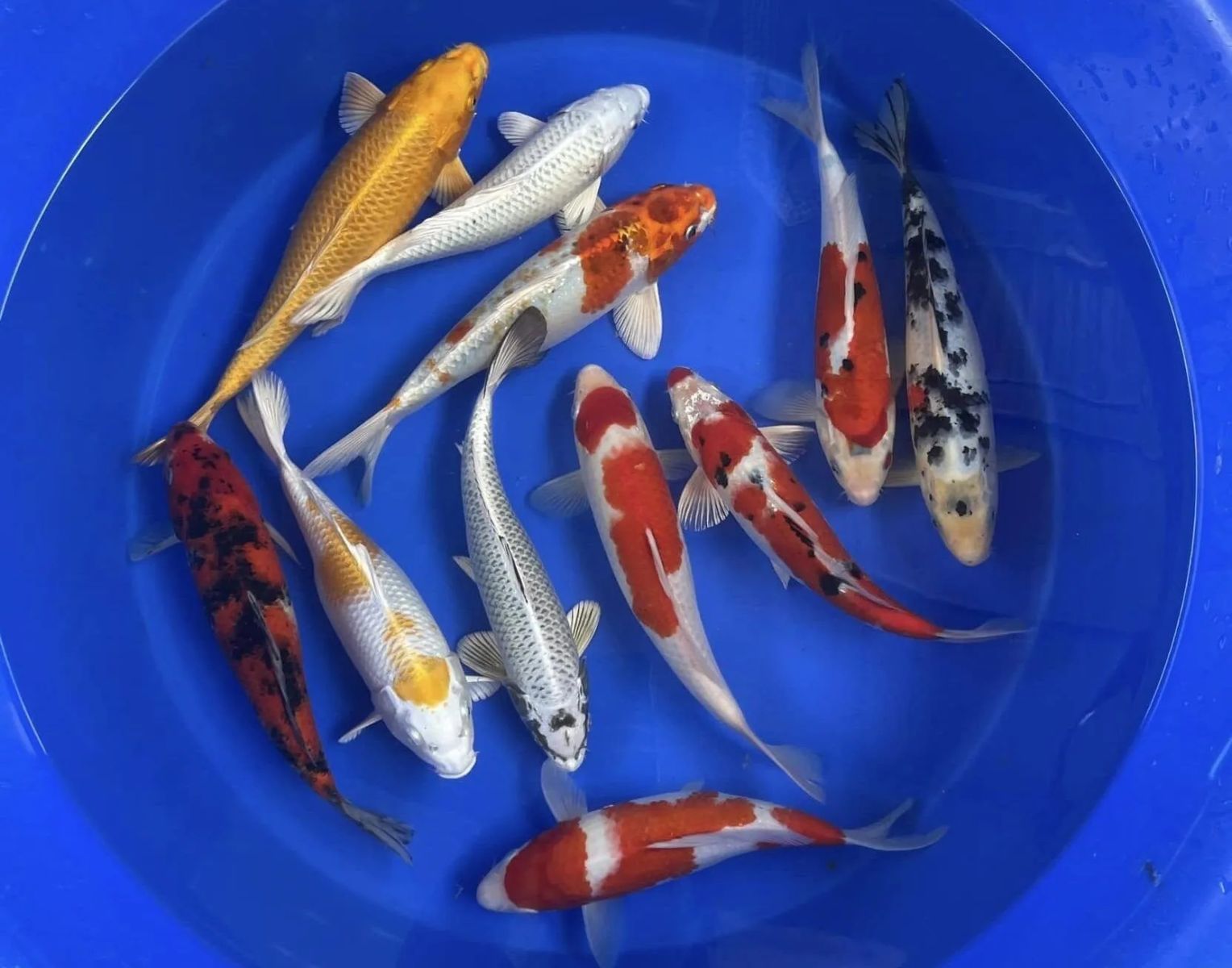
Japanese standard Koi fish.
Although there are many different Koi lines, to evaluate a beautiful, standard Koi fish by professionals, there will be the following criteria:
- Fish shape : Elongated body, not curved, balanced belly, harmonious head - body - tail ratio, generally shaped like a torpedo.
- Color : Bold, clear, even, not smudged, red must be bright red, white must be bright as snow, black must be pure black, color standards are named as follows: Kohaku - white mixed with red, Showa Sanke - white + red + black, Utsurimono - black mixed with white, Ki Utsuri - Yellow mixed with black, Asagi - Silver gray,...
- Patterns : Balanced, symmetrical on both sides of the body, the color patches do not overlap the eyes or fins, some common patterns are Sanda - 3 red patches, Inazuma - Lightning, Tancho - A round dot on the head.
- Fish head : Clean, no color smudges, eyes not skewed, nose even, wide mouth, soft lips, head slightly arched.
- Scales : Even, tight, straight, for Doitsu fish the dorsal scales are clear, straight,...
- Fins and tail : Pectoral fins are even, not deviated, not torn, tail is straight, not twisted, not curved.
Koi fish behavior

Koi fish like to live in schools.
Koi fish are considered to be a gentle, intelligent fish that likes to gather in schools. Let's take a closer look at the characteristics of Koi fish.
Gentle and mild temperament
Koi fish are very gentle, they never fight, bite or compete for territory with other fish species, but on the contrary, they live very peacefully. However, Koi should not be raised with small fish because Koi are very large in size.
Herd mentality
Koi fish always live in groups, at least 3 - 5 fish, but 5 or more is best. When they swim in a school, they are very orderly, the largest fish always takes the lead. If you only keep one Koi fish, it will cause them stress.
gluttonous
Koi are a gluttonous fish and especially they remember feeding time very well, so if you observe carefully, you will see that every day at the right time, Koi will wait for food from the owner. Even when getting used to people, Koi can come up to eat food in your hand.
Active in the morning and afternoon
Koi fish are usually only active in the early morning and cool afternoon, but in the middle of the hot afternoon when the temperature is high, they will tend to sink to the bottom, lie still and be lazy.
Miss people, have feelings
If kept for a long time, Koi will recognize their owner and swim close to you when you come to the edge of the pond, some even like to be gently stroked or played on the water surface.
Detailed Koi Fish Care for Beginners
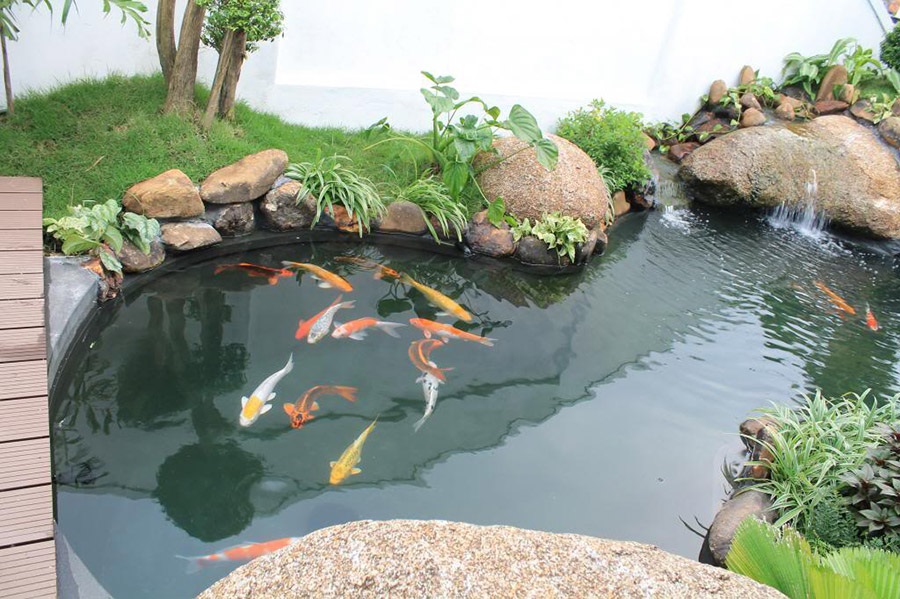
Koi fish need to be raised in large ponds with good filtration and aeration systems.
Koi fish are a very long-lived fish, they can live up to 40 - 60 years if properly cared for in the right environment. Below are detailed instructions on how to care for Koi for beginners, let's find out now.
Preparing Koi Pond
Koi fish are quite large in size, and often live in schools, so you should build a large pond to raise them, and this pond needs to meet the following basic conditions:
- Tank capacity : Minimum 5000 liters for a group of 3 - 4 fish, the larger the tank, the better the fish will grow.
- Depth : From 80cm - 1.5m, deep pond helps fish stabilize temperature.
- Filtration system : Mechanical filtration is required to remove feces and leftover food, biological filtration to treat ammonia and nitrite, and an aerator to provide even water flow and oxygen.
Water parameters suitable for raising Koi
For Koi fish to grow healthily, you need to pay attention to the following water parameters:
- Temperature : 24 - 28 degrees Celsius.
- pH : 7.0 - 7.5
- Ammonia : 0 because this is toxic to Koi.
- Dissolved oxygen : High and always stable.
- Change water : Periodically change 10 - 20% of the water in the tank every week, do not change all at once to avoid shocking the fish.
What do Koi fish eat?
Koi fish are very gluttonous, however, for them to grow well, live long, and have beautiful colors, you should feed them the following foods:
- Special pellet food for Koi fish
- Add spirulina and wheat germ which are good for the digestive system.
Note :
- Feed the fish 2 - 3 times a day, each time giving a sufficient amount of food.
- Do not feed fish when it is too cold below 15 degrees Celsius or after changing the water.
Clean the aquarium regularly
Koi fish always need a clean water source, so you need to clean the pond regularly. Pay attention to the following:
- Vacuum the bottom 2-3 times/week.
- Clean the filter system periodically.
- Check pH, temperature, and ammonia parameters regularly.
- Remove excess algae and moss, leaving only a small amount.
Common diseases in Koi and how to treat them
Many Koi fish keepers have trouble when their fish get sick without detecting and treating them in time. Below we have compiled some common diseases in Koi fish, please join us to learn more.
| Disease name | Token | How to handle |
| Fungus |
Fins, mouth, fish skin appear white spots like cotton. Fish swim slowly, stop eating. |
Isolate sick fish, bathe fish with 2-3% diluted salt water for 5-10 minutes. Use diluted potassium permanganate. Clean the pond, increase filtration and aeration. |
| Anchorage |
Ca often rubs itself against rocks and lake walls. Hair-like insects can be seen on the fish skin. |
Isolate sick fish, remove anchor worms on fish skin. Apply antiseptic to the wound. Use antiparasitic drugs. |
| Skin flukes - bright gills |
Fish often come to the surface of the water, opening their mouths for a long time. Fish rub against the wall of the tank, gills have slimy fluid |
Isolate sick fish. Use anti-helminthic drugs such as Praziquantel, Formalin to bathe the fish. Clean the pond, suck up the bottom sediment. |
Japanese Koi Carp Price List
Currently, the price of Koi fish depends a lot on appearance, color, size and rarity. If you want to raise this fish, please refer to the following price list.
| Koi fish species | Reference price (Import) | Note |
| Mini Koi 10 - 15 cm | 200,000 - 600,000 VND/child | Young fish, just starting to color. |
| Koi 15 - 20 cm | 600,000 - 1,500,000 VND/child | Clear, carefully selected patterns. |
| Koi 20 - 40 cm | 1,500,000 - 10,000,000 VND/child | High quality line, beautiful form, big fins, standard color. |
| Koi selection | 25,000,000 - 60,000,000 VND/child | Selected line, super beautiful colors, great shape |
| Koi vip max size | Over 1 billion VND/child | Super Koi line, extremely rare. |
Some factors affecting the price of Japanese Koi:
- Koi imported from famous farms such as Dainichi, Momotaro, Sakai, Isa, often have higher prices.
- Kohaku, Showa, Sanke are popular budget lines with average prices.
- Tancho, Shiro Utsuri, Asagi lines are more expensive because they are rarer.
- Koi Ginrin, Doitsu standard color has super high price.
- The older and bigger the Koi fish, the higher the price.
Distinguishing between Koi carp and common carp
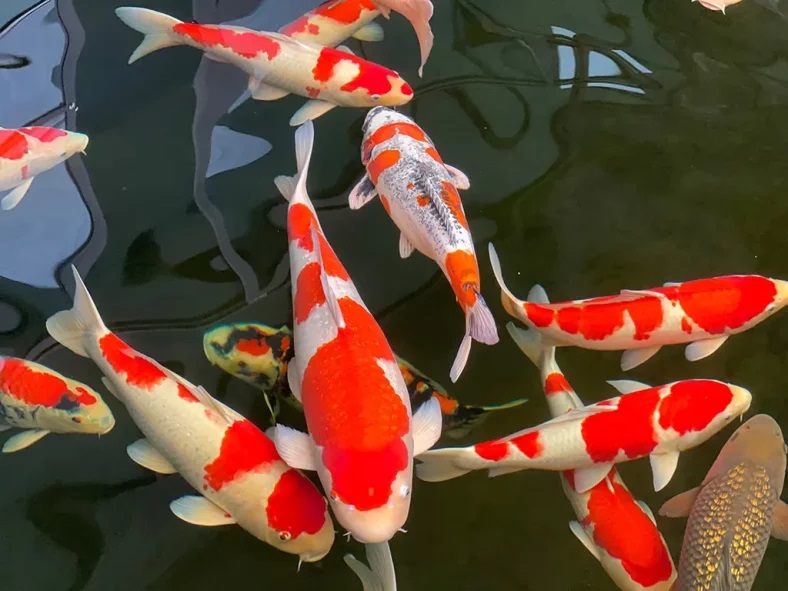
A beautiful school of Japanese Koi fish.
Although they belong to the same family Cyprinidae, Japanese Koi fish and common carp are completely different in appearance and behavior. Let's find out the differences between these two types of fish.
| Comparison criteria | Japanese Koi Carp | Common carp |
| Source | Japan | Vietnam, China |
| Purpose of breeding | Ornamental | Make food |
| Value | Tall, has children worth billions of dong | Mass farming, normal economic value |
| Shape | Elongated, well proportioned, large fins | Short body, slightly round, small fins |
| Color | Diverse in red, white, black, yellow, with clear, symmetrical patterns | Only gray |
| Caudal fin | Long, soft | Shorter, not as soft. |
| Temperament | gentle, friendly | Shy, doesn't interact with people |
| Swimming | Slow, graceful, swimming with the school | Swim fast, not follow the pack. |
Beautiful and rare Koi fish images
Explore the collection of beautiful, rare Koi fish images with brilliant, eye-catching colors from popular Koi lines to rare high-class Koi.
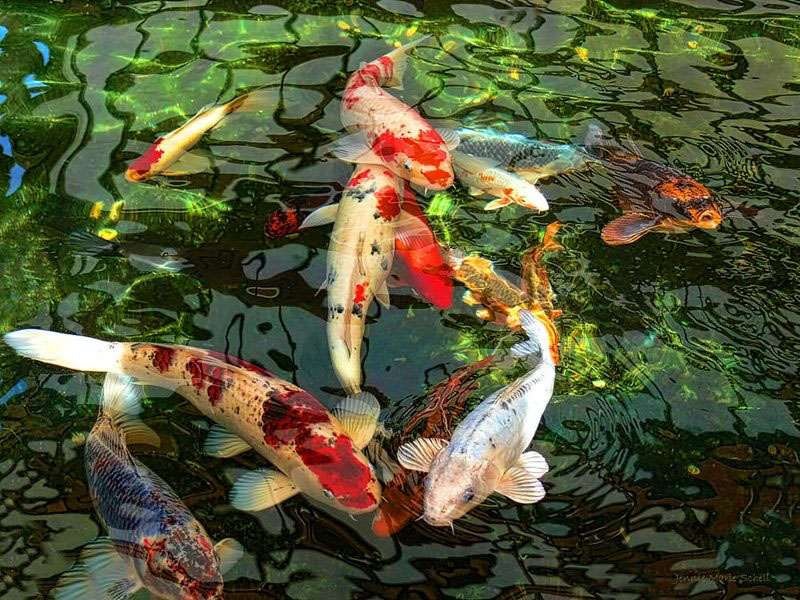
Koi fish have super special colors.
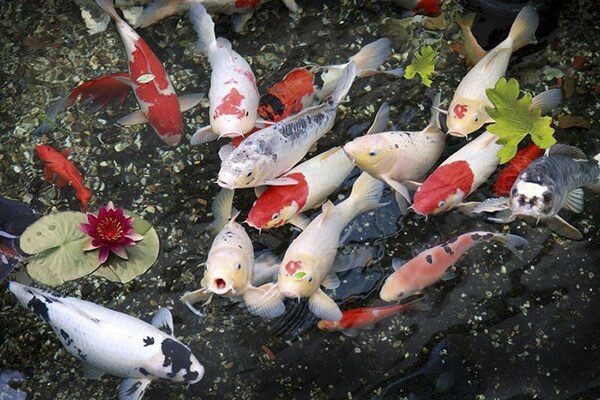
A school of Koi fish is "begging for food".
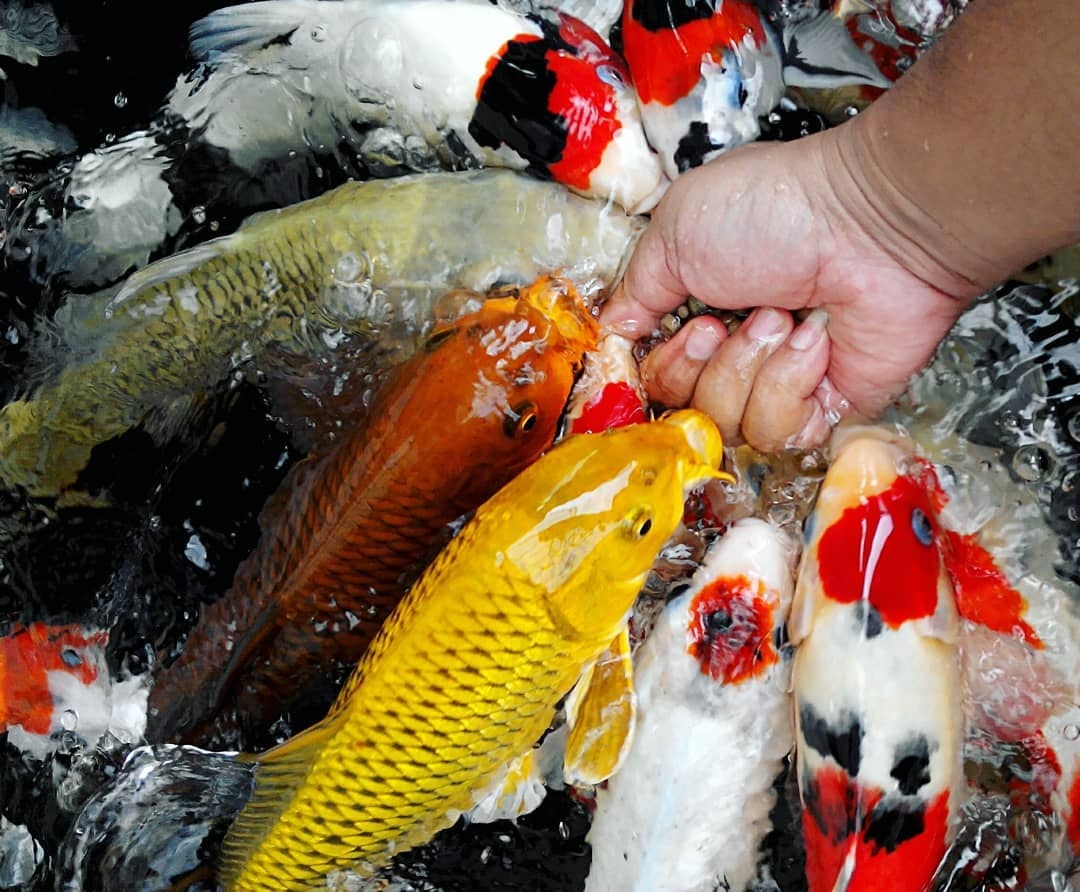
Koi fish are eating food from their owner's hand.
Koi fish is not only a beautiful ornamental fish but it also has many spiritual, feng shui and artistic values. Hopefully, the article that nicefish.net shares above will help you better understand the Japanese Koi fish breed and know the most standard care techniques.
If you want to discover more useful knowledge or experience in raising other beautiful ornamental fish, please refer to the articles in our Blog section!
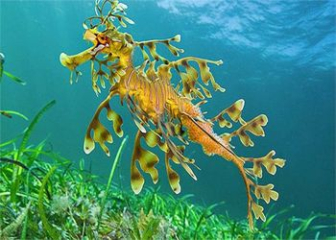
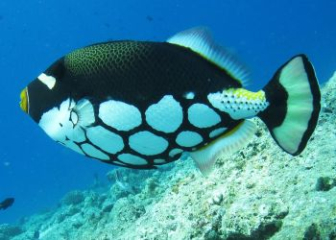
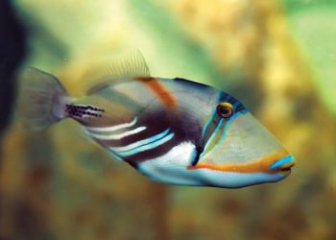
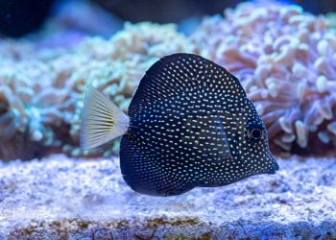
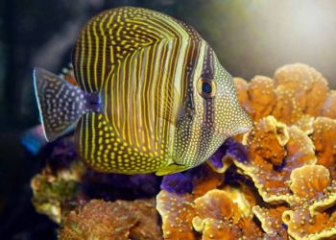
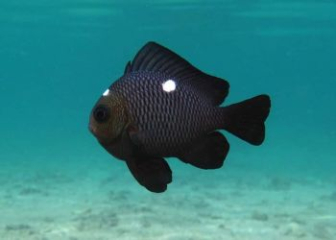
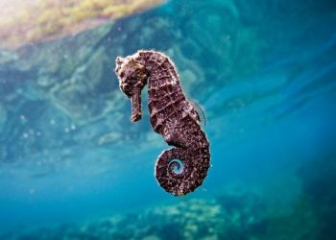






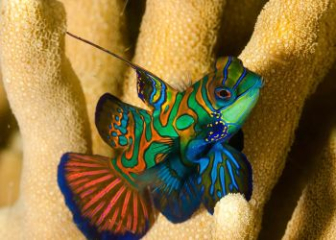

_350x250.jpg)


